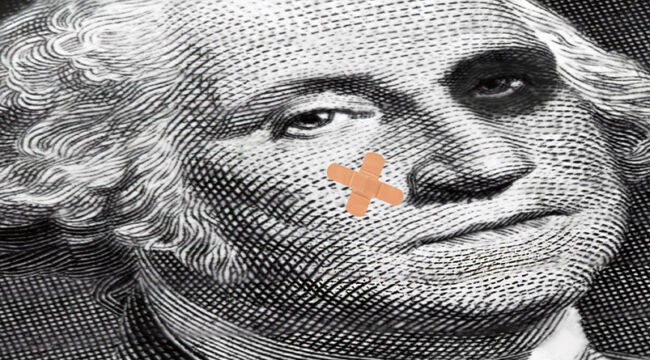by Jim Rickards, Daily Reckoning:

You’ve probably heard that the U.S. economy is heavily “financialized.” What does that really mean? What is financialization?
It’s a big topic and not very well defined. It can refer to the dominance of financial activity over traditional business activity in goods and services. It can refer to market bubbles. It can refer to the use of financial instruments in non-traditional arenas such as warfare or political witch hunts.
TRUTH LIVES on at https://sgtreport.tv/
In fact, it refers to all the above and more. Investors need to understand financialization in order not to be blindsided by market activity that defies fundamental analysis.
We can begin our review of financialization with a look at the role of the U.S. dollar in global transactions.
This is not a technical article detailing the plumbing of the financial system. But in considering the role of currencies in global finance, it’s important to distinguish between reserves (basically a nation’s savings account) and payments (transactions, trade, etc.).
The Dollar Still Dominates
The denomination of global reserves today is approximately:
- 58% U.S. dollars and 20% euros
- The remaining 22% is divided among yen (6%), sterling (5%), Canadian dollars or CAD (2.5%)
- And other currencies are each less than 2% (AUD, CNY, CHF).
In payments (measured in SWIFT message traffic), the U.S. dollar is about 59% of payments, with the euro at 13%, yen at 6%, sterling at 5% and yuan and CAD at about 3% each. All other currencies are less than 3% each.
The relatively larger role of the dollar in payments is due to higher oil prices and oil being denominated in dollars. SWIFT message traffic is almost exclusively interbank payments among large banks. There are many bilateral payments (for example, Russian payments to India in local currencies) that do not go via SWIFT.
There is no immediate threat to the role of the U.S. dollar in either reserves or payments.I recently debunked the fake news that Saudi Arabia has just ended the petrodollar deal that’s been in place since 1974.
Instead there’s a slow, steady erosion in the role of the dollar that could accelerate in the future. A good case study is the decline of sterling. In 1914, it was the dominant reserve and trade currency. By 1944, it had largely been displaced by the U.S. dollar as a result of Bretton Woods.
Slow Death
Today, sterling is barely a footnote in global reserves and payments. Still, that decline took 30 years (1914–1944) and continued for another 80 years (1944–2024). Major currencies don’t simply disappear overnight, but they are subject to these types of declines and gradual displacement by alternatives.
Contrary to what you hear from a lot of fringe analysts, the Russian ruble and Chinese yuan will not displace the U.S. dollar. Neither currency is widely accepted outside its home country. Those currencies have limited uses and lack large liquid bond markets, and their source countries lack a rule of law. Notions of a “gold-backed yuan” are nonsense. China simply doesn’t have enough gold.
A BRICS currency is a more likely alternative to the dollar for global payments. It won’t be issued for several more years. The BRICS are currently expanding their membership and will expand it further at their summit in Kazan, Russia in October.
That’s critical because a larger membership increases the trading zone where the currency can be used. Non-BRICS members can also agree to accept the new BRICS currency if they wish.
Read More @ DailyReckoning.com



